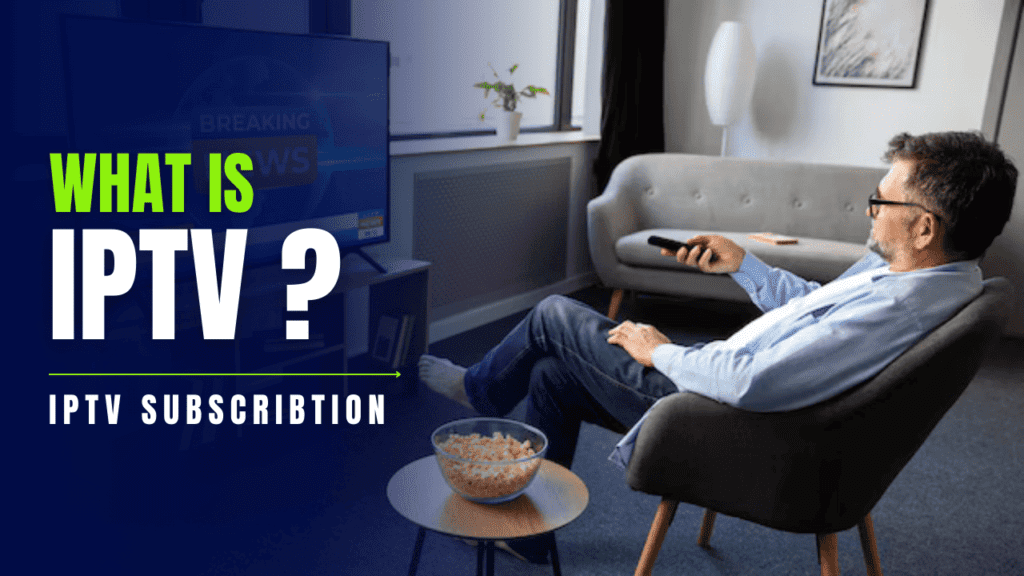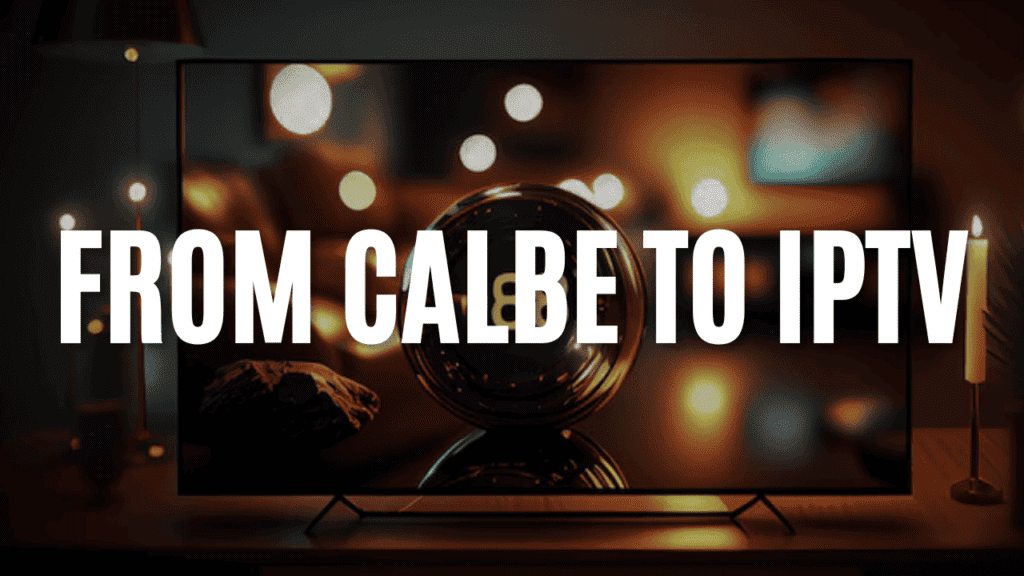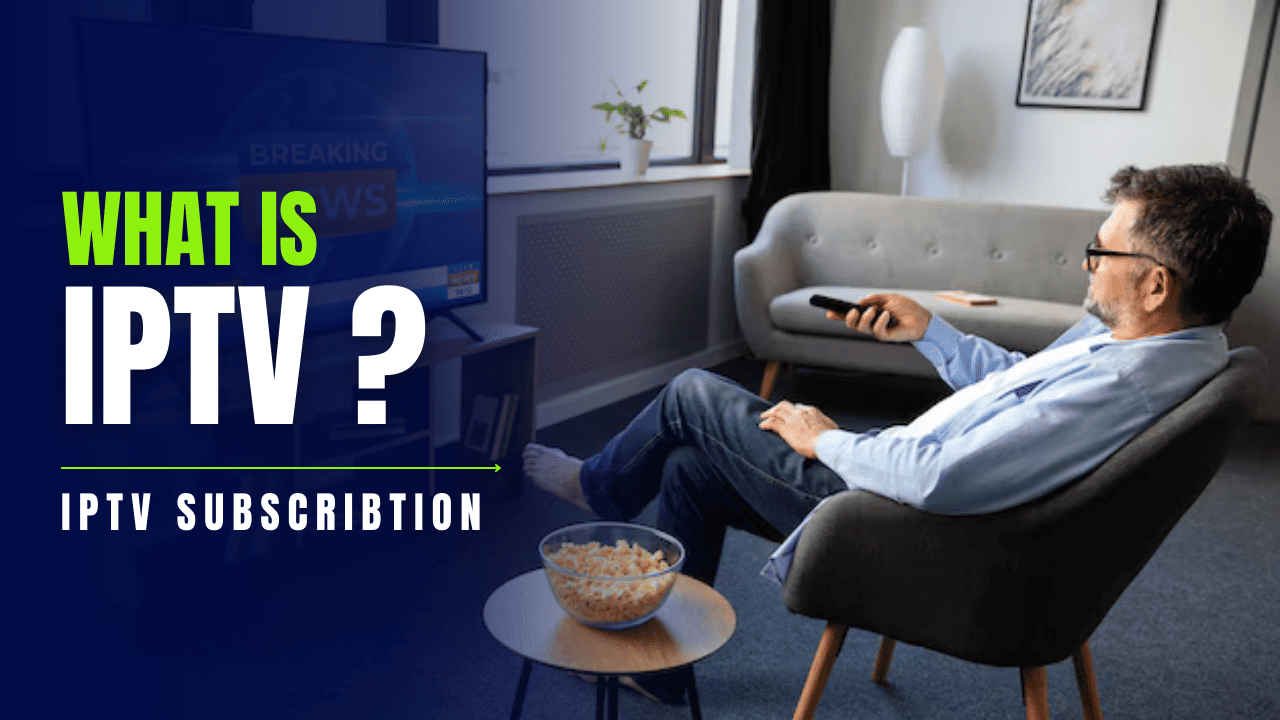What is IPTV? A Brief Overview

What is IPTV? Revolutionizing Media Consumption
What is IPTV (Internet Protocol Television) is transforming how we consume media by delivering content over the internet instead of through traditional cable lines. This shift allows viewers to access a broader range of programming options, free from conventional broadcast schedules.
Flexibility in Content Selection and Pricing with IPTV
Unlike traditional cable services, which rely on bulky infrastructure and bundled packages, IPTV offers flexibility in content selection and pricing. Subscribers can personalize their IPTV experience based on individual preferences, making it a compelling option in today’s entertainment landscape.
Binge-Watching and On-Demand Content on IPTV
A major advantage of IPTV over cable is the option to binge-watch entire seasons or enjoy on-demand content whenever desired. Many IPTV providers also offer cloud DVR features, allowing users to record and access content without needing physical devices.
Interactive and Engaging IPTV Experience
As streaming technology evolves, users increasingly prefer interactive IPTV services. Many platforms offer apps and multimedia functionalities that enrich engagement beyond traditional video, positioning IPTV at the forefront of modern entertainment. With its adaptability and expansive options, IPTV is redefining digital lifestyles and competing strongly with traditional cable.
Understanding What is IPTV Technology: What is IPTV and How Does it Work?
One of the most significant advantages of IPTV is its ability to deliver customized content through targeted algorithms. This means that viewers can receive personalized recommendations based on their viewing habits, making it easier than ever to discover new shows or genres. Additionally, with the rise of live streaming capabilities integrated into IPTV services, audiences can enjoy real-time broadcasts seamlessly alongside Video-on-Demand options. As users become more accustomed to this level of interactivity and personalization, it’s clear that IPTV is not just a trend but an evolution in our relationship with media consumption.
Evolution of Television: From Cable to IPTV

The television landscape has undergone a seismic shift from traditional cable to the rise of Internet Protocol Television (IPTV), revolutionizing how we consume entertainment. Cable TV, once the reigning champion, confined viewers to fixed channel line-ups and rigid programming schedules. However, with the advent of IPTV—streaming content via internet protocols—this dynamic has changed drastically. What is IPTV? It’s a method that delivers television programming through internet connections rather than conventional satellite or cable formats, allowing for real-time streaming without geographic constraints.
This transition caters to a generation craving flexibility; today’s viewers can curate their own content libraries on-demand, watching what they want at their convenience. With an advanced understanding of data packets and user interfaces, IPTV not only provides greater choice but also personalized experiences tailored to individual tastes—all while bypassing hefty cable subscriptions. Moreover, as speeds improve and infrastructure evolves, innovations in IPTV signal a future where interactive viewing experiences will be commonplace—a leap forward that rewrites our relationship with visual storytelling. Embracing this technology signals more than just change; it marks an era where creativity knows no bounds and audience engagement reaches unprecedented heights.
Learn more about IPTV technology and how it’s evolving on Techopedia.
Benefits of IPTV for American Consumers

IPTV, or Internet Protocol TV, heralds a new era for American consumers by revolutionizing the way they access and enjoy their favorite content. One of the most significant benefits is the incredible flexibility it offers. Unlike traditional cable subscriptions tied to contracts and fixed schedules, IPTV allows users to choose from a vast library of channels and on-demand options based on their preferences. This not only empowers viewers to curate their television experience but also saves them money by eliminating unnecessary packages that come with conventional services.
Moreover, IPTV enhances viewing quality with options for high-definition and even 4K resolution, providing an immersive experience at home. With features like pause, rewind, and record available on many platforms, consumers can watch what they want when they want without being held hostage by broadcast timings. Additionally, many IPTV services are accessible across multiple devices—be it smart TVs, tablets, or smartphones—affording unparalleled convenience in today’s fast-paced lifestyle. As American households continue to embrace streaming options over restrictive cable services, IPTV represents not just a technological evolution but also a shift towards personalized entertainment perfectly suited for modern-day viewing habits.
Key Players in the IPTV Market
In the dynamic landscape of IPTV, key players are not just competing for market share but reshaping how we perceive television consumption altogether. Major telecommunications companies have seamlessly integrated IPTV into their existing service offerings, leveraging their robust infrastructure to deliver high-quality streaming services. This has led to a surge in IPTV subscriptions, with consumers now enjoying a vast array of content from live sports to on-demand movies without traditional cable constraints.
Moreover, tech giants like Amazon and Google are making significant strides by introducing their own platforms that integrate smart technology and user analytics. Their algorithms enhance viewer experience by recommending tailored content based on individual preferences. As these corporate behemoths invest heavily in original programming, they transform the competitive narrative of the IPTV market — it’s not just about access anymore; it’s about exclusive content that keeps subscribers loyal amidst an inundation of choices. This evolving marketplace suggests that partnerships between streaming service providers and established media enterprises could redefine content delivery models for years to come.
Challenges Facing IPTV Adoption in America
One of the major challenges facing IPTV adoption in America is the fragmentation of content and services. With numerous streaming platforms vying for viewers’ attention, consumers often find themselves overwhelmed by choices. Many traditional cable subscribers express reluctance to switch to internet protocol television (IPTV) because they fear losing access to popular channels or miss out on their favorite shows. This hesitancy can be alleviated by providers like Uniflixtv.com, which offers a comprehensive selection of channels, ensuring that users can still enjoy both mainstream and niche content all in one place.
Another hurdle is the technological infrastructure required for smooth streaming experiences. While many urban areas boast high-speed internet necessary for IPTV navigation, rural regions remain underserved, making it difficult for some potential subscribers to consider transitioning from standard cable services. By actively improving connectivity options through partnerships with local ISPs, premium IPTV providers such as Uniflixtv.com are paving the way toward broader adoption. As more households recognize the flexibility and cost-effectiveness of an IPTV subscription over traditional models, these barriers will gradually begin to dissolve—ushering in a new era of entertainment accessibility across America.
The Role of Internet Speed and Infrastructure
The efficacy of IPTV services like uniflixtv.com heavily relies on internet speed and infrastructure, revealing a fascinating intersection between technology and viewing experience. With the proliferation of streaming services, a stable internet connection becomes paramount for seamless content consumption. Poor connectivity can lead to buffering or interrupted services that detract from viewers’ enjoyment, making high-speed internet essential for avid fans of Internet Protocol Television (IPTV). Moreover, the evolving landscape of internet infrastructure is reshaping how consumers access media. Areas with cutting-edge fiber-optic networks can deliver superior bandwidth capacities, allowing IPTV subscribers to enjoy crisp HD streams without interruption. Uniflixtv.com not only capitalizes on this trend but also ensures that its offerings remain compatible with varying levels of internet connectivity. By optimizing their service for both high-speed users and those in areas with limited infrastructure, they enhance accessibility and broaden their audience reach—all while maintaining quality streaming entertainment at the forefront of consumer preferences.
Comparing IPTV with Traditional Cable Services
IPTV, or Internet Protocol Television, revolutionizes the way we consume media by delivering television content through internet connections instead of traditional cable lines. This shift allows viewers to access a wider range of programming options without being tethered to conventional broadcasting schedules. Unlike traditional cable services that often depend on expansive physical infrastructure and bundled packages, IPTV offers more flexibility in content selection and pricing, allowing subscribers to curate their viewing experiences based on personal preferences.
One of the most striking differences between IPTV and traditional cable is the ability for users to binge-watch entire seasons or enjoy on-demand content anytime they wish. Moreover, many IPTV providers offer features like cloud DVR capabilities, which enhance user convenience compared to standard cable systems that require physical recording devices. As streaming technology continues to evolve, customers are increasingly drawn toward an interactive viewing experience where apps and additional multimedia functionalities enrich engagement beyond mere video consumption. With its adaptability and broader offerings, IPTV stands at the forefront of modern entertainment choices—challenging conventional cable’s reign while aligning with an increasingly digital lifestyle.
Why is IPTV So Popular?
IPTV’s popularity aligns with the changing needs of today’s viewers. Here’s why more people are choosing it:
- Flexibility and Convenience: IPTV doesn’t require a fixed schedule. You can watch content anytime, anywhere, whether on the couch or commuting.
- Device Compatibility: You can watch IPTV on various devices, from smartphones to laptops, making it accessible on the go.
- Cost-Effective: Many IPTV options are more affordable than cable, with flexible subscription plans to fit different budgets.
- Higher Quality Streaming: With a solid internet connection, IPTV offers HD and even 4K quality, a major upgrade over some traditional TV services.
- Global Content Access: IPTV allows access to international channels and shows that may be unavailable locally, expanding your entertainment options.
